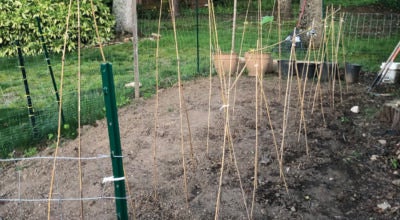Crystal Cockman: The Fiber of Our Lives
Published 9:00 am Sunday, June 17, 2018

- Crystal Cockman writes a column for The SNAP through the Three Rivers Land Trust.
The LandTrust for Central NC recently closed on a donated conservation easement with Barry and Angela McSwain of Norwood. They protected their 183-acre farm located near the Pee Dee River.
This farm has beautiful rolling hills with a couple of small streams and one large wetland, but the majority of the property is in agriculture. The main thing they grow on the farm is cotton.
Cotton is a soft, fluffy fiber that grows in a boil around the seeds of plants of the genus Gossypium and the family Malvaceae, or the mallow family. Other members of the mallow family include hibiscus, or one plant that is found on edges of our rivers and lakes — the marsh mallow. Both of these plants produce beautiful flowers similar to the flowers produced by cotton.
The majority of cotton grown commercially is Gossypium hirsutum, upland cotton. Cotton is a native shrub in the Americas, Africa, Egypt and India. Interestingly, Mexico has the greatest diversity of wild cotton species. Cotton is believed to be one of the first fibers to be domesticated.
Cotton is one of the world’s leading agricultural crops and is the most widely used natural fiber cloth in clothing today. Cotton is grown in more than 90 countries worldwide. About 2.5 percent of world cropland is planted in cotton.
Native cotton is a perennial plant, but when cultivated it is grown as an annual —meaning that the seeds are sown during spring, the cotton harvested in autumn, then the field plowed and the plants tilled under, to be planted again the next spring. Cotton seeds germinate in 7-10 days. A bud appears 5-7 weeks after planting and forms flowers. White blossoms are pollinated, turn pink, and wither, producing green bolls that then mature into cotton bolls with the characteristic white fuzzy fibers.
Cotton fibers are spun into yarn or thread and made into a textile. Cotton is natural, unlike polyester, rayon and other synthetic fibers. Cotton is grown on farms, not created in a lab. Cotton is favored over many other materials because it is soft, breathable, has a good absorbency, retains color well, is machine washable, is strong, and is easy to handle and sew.
The largest increase in cotton production corresponds to the invention of the cotton gin (“engine”) by Eli Whitney in 1793. The gin separates the cotton fibers from the seeds. This allowed the production of more cotton fiber, which resulted in changes in the spinning and weaving industry.
There are different uses for the different parts of cotton. The longer fibers are used to create clothing and bedding and other home products. The finest cotton products are made from the longest cotton fiber grown, as you can spin softer yarns with long fibers.
Short fibers are used for products like cotton balls and q-tips, or for stuffing in furniture. Seeds are used to produce cottonseed oil, which is used in foods and cosmetics. The hulls of the cotton seeds can be used to feed cattle, and as mentioned above, plant stalks are tilled back into the soil after they are harvested.
Cotton is an important crop in our area and the United States as a whole. The United States is the number one exporter of cotton.
So the next time you put on a cotton T-shirt or a pair of jeans, think about the cotton plant that produced the yarn that made that garment.
And thank a farmer, like the McSwains, who produce the cotton that makes it all possible.
Crystal Cockman is land protection director for The LandTrust for Central North Carolina, of which Stanly is part.



